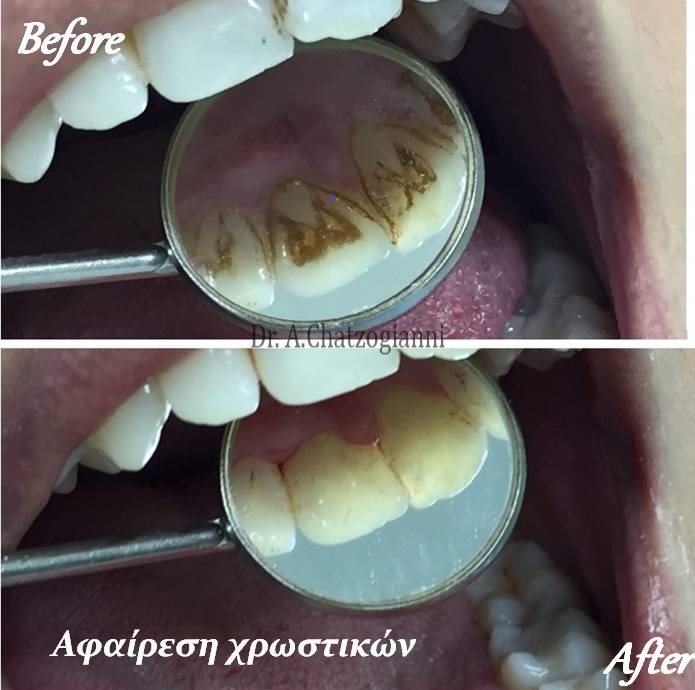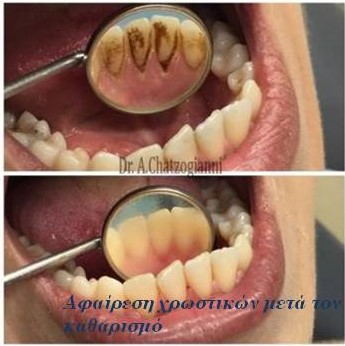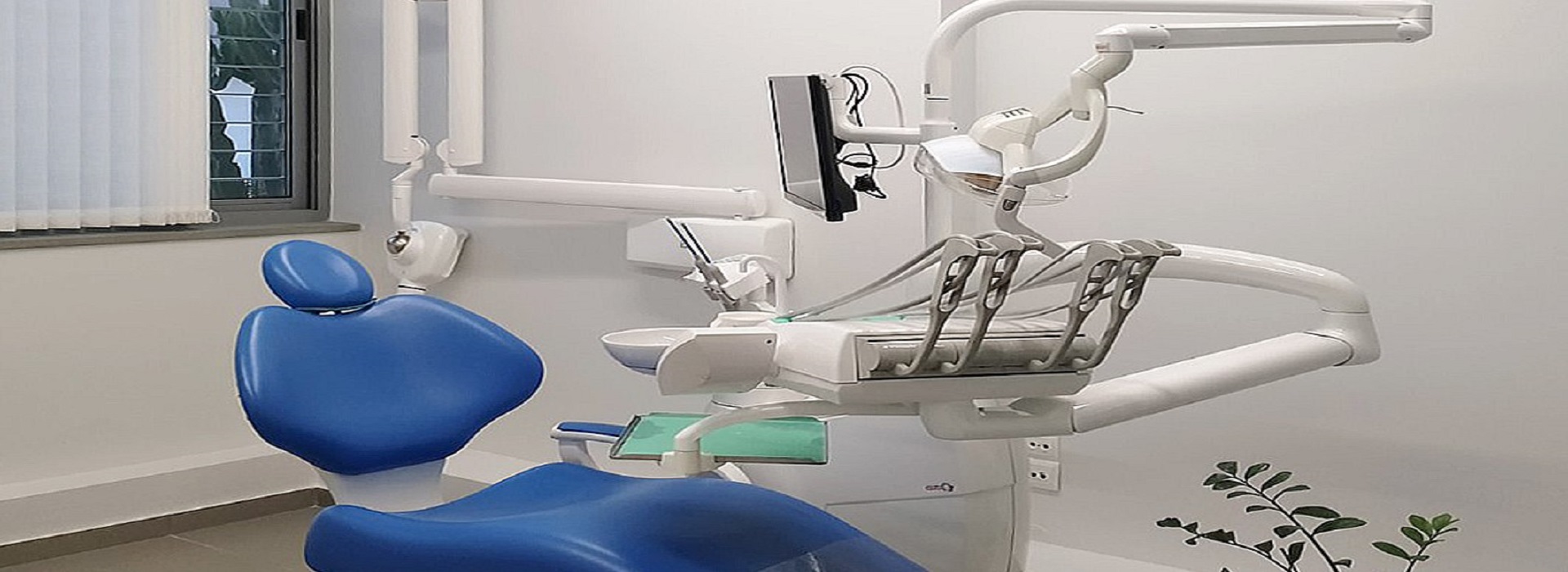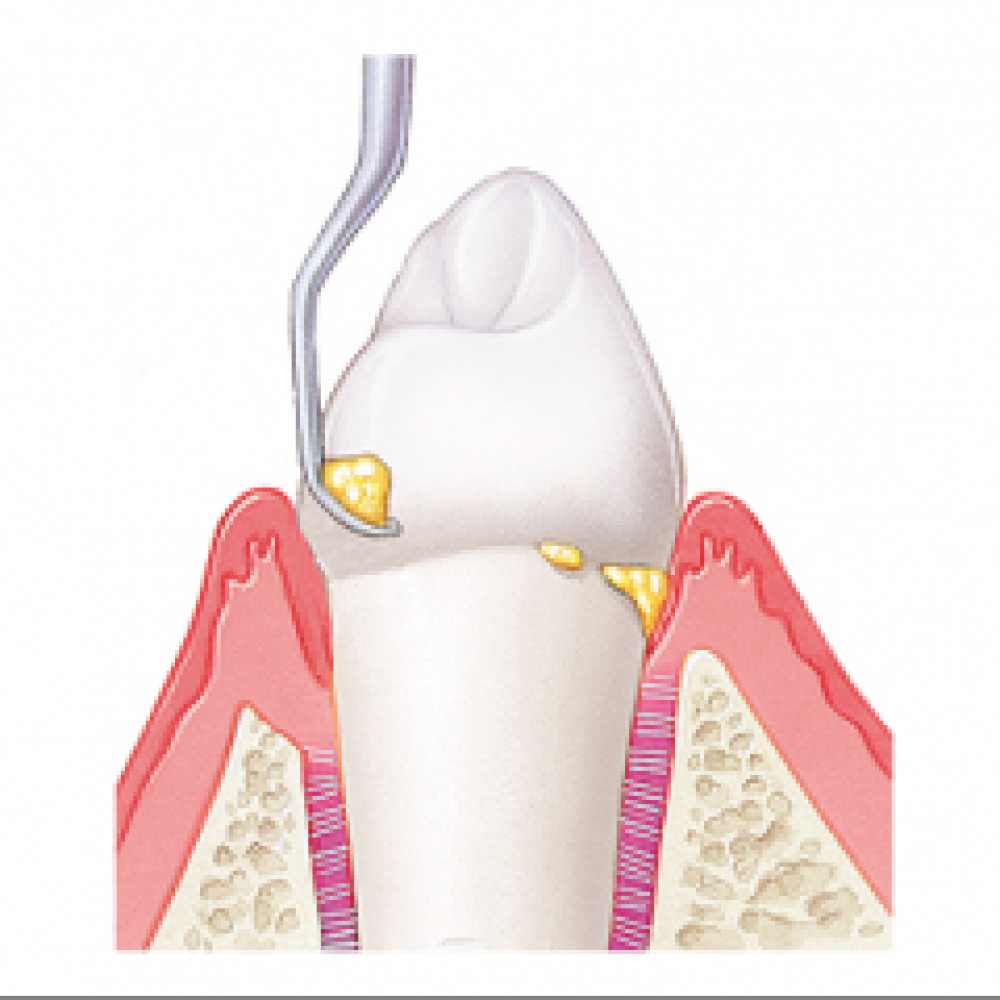This is a relatively simple procedure where the dentist, with the use of appropriate tools (scraper, ultrasound, air polishing), removes painlessly and effectively the dental plaque , the tartar (commonly known as tartar) and pigments from the teeth, making them healthy again.
Tartar is formed from dead microbes in the mouth, as well as from saliva components. Tartar is essentially the plaque which has hardened gradually and can not be removed using a simple toothbrush. So, good oral hygiene is not enough to prevent the formation of tartar beneath the gums (subgingival tartar).
Tartar, if not diagnosed and removed early by the dentist, germs in the teeth will continue to accumulate and develop bacteria, causing irritation and inflammation in the gums, the known to all gingivitis. Gingivitis results in the bad breath and the looser support of the teeth from the gums. Advanced gingivitis causes an edema (our gums are swollen,) recession (receding) and redness of the gums, which bleed, either automatically or during brushing.
 Up to this point, the condition can be treated with a dental cleaning / tartar removal by the dentist and frequent and thorough brushing.Cleaning is usually performed 1-2 times a year, but it varies depending on the patient, their saliva, and the condition of their gums.The treatment is completed by polishing with the use of a diamond powder paste which smooths the surfaces, so that microbes do not adhere easily. It also removes the surface pigments found on the teeth. Tartar removal, or, the commonly known cleaning of the teeth is the main axis of prevention in the oral hygiene of the individual.
Up to this point, the condition can be treated with a dental cleaning / tartar removal by the dentist and frequent and thorough brushing.Cleaning is usually performed 1-2 times a year, but it varies depending on the patient, their saliva, and the condition of their gums.The treatment is completed by polishing with the use of a diamond powder paste which smooths the surfaces, so that microbes do not adhere easily. It also removes the surface pigments found on the teeth. Tartar removal, or, the commonly known cleaning of the teeth is the main axis of prevention in the oral hygiene of the individual.

If the condition is not treated promptly, the periodontal pockets gradually become deeper. Then the patient has gone to the stage of the incipient periodontitis. The infection affects the periodontal tissues and a loss of bone is observed around the teeth. Without an immediate periodontal treatment, the teeth will begin to move and eventually fall. Proper and deep cleasing by the dentist may inhibit progression, but can not restore the gums and bone to the previous condition. This is why surgery is required.
Pain in the teeth after cleaning
It is often normal for a slight pain to be felt in the teeth and gums after a thorough cleaning by the dentist, especially if there is a problem of sensitivity before or if the patient has not undergone a cleaning for a long time. Symptoms resolve in two weeks. If they persist, the dentist may recommend toothpastes or special desensitization preparations, if deemed necessary. For more information click the link: https://www.chatzogianni.gr/gr/uphresies/apotrugosi-i-katharismos-dontion-8


